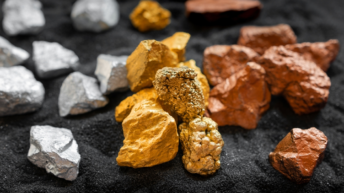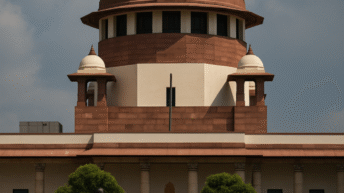
The biggest question in everyone’s mind today is what will be the impact of Hezbollah Secretary-General Sayyed Hassan Nasrallah’s death in an Israeli air strike on his underground hideout in Beirut?
Nasrallah’s predecessor Sheikh Abbas Musawi, a prominent Lebanese cleric and one of the co-founders of Hezbollah was killed in a similar manner on 16 February 1992 when an Israeli helicopter gunship attacked his convoy, killing him, his wife, his son, and four others. Musawi’s assassination led to a strong response from Hezbollah, which intensified its operations against Israel.
Hassan Nasrallah who stepped into Musawi’s shoes ran Hezbollah for more than thirty years since the early 1990s.
Nasrallah’s Influence over Hezbollah
Nasrallah, was a brilliant tactician, charismatic figure, and skilled orator. His fiery speeches inflamed the hearts and minds of his supporters. He was widely regarded as a person who had the guts to defy Israel and the West. Under his leadership Hezbollah developed as a prominent political and military power in the Middle East.
Nasrallah’s leadership and ability to motivate people, both within Lebanon and across the Shiite Muslim world played a key role in ensuring Hezbollah’s unity, survival and growth.
Nasrallah’s death would certainly leave behind a vacuum as very few others including his cousin and possible successor Hashem Safieddine (who has reportedly also be assassinated by Israel) or Hezbollah’s 71-year-old deputy secretary-general Naim Qassem carry the same level of respect, experience, and authority. While the organisation supported by Iran, has a strong bureaucratic structure, Nasrallah’s absence dealt a body blow to Hezbollah’s leadership and morale.
Leadership Struggles and Internal Division
The immediate fallout of Nasrallah’s death may lead to a power struggle within Hezbollah which has a decentralised hierarchical command structure with political, military, and social service branches for effective decision-making and operational coordination.
At the top is the Secretary-General, who holds the ultimate authority and is the public face of Hezbollah. He is responsible for key political and military decisions. Then comes the Shura Council, which is the highest decision-making body or executive body consisting of senior leaders who manage both the political and military aspects of the organization and take major decisions.
Hezbollah’s military wing (also called Islamic Resistance) has a highly structured and partly secret chain of command with field Commanders who oversee regional operations and specialized units such as intelligence, logistics, communications, and elite fighting forces.
Hezbollah is a significant political force that participates in elections and holds seats in the Lebanese Parliament. Hezbollah’s influence in Lebanon’s political landscape allows it to maintain legitimacy and defend the group’s interests within the government and at the international level.
Likewise, Hezbollah has a social services wing that operates a network of hospitals, schools, and charities primarily serving the Shia community in Lebanon.
Nasrallah was a unifying figure with a strong hold over both the military and political wings of the organization. This is why finding a leader who can command the same level of authority and public trust as Nasrallah will be difficult. Without his presence, old divisions and rivalries could resurface. His death could undermine that careful balance, leading to increased factionalism within Hezbollah’s ranks.
Hezbollah’s Iran connection
Hezbollah’s Iran connection cannot be overlooked. Hezbollah enjoys strong backing from Iran, which provides it with financial support, training, and advanced weaponry. Tehran views Hezbollah as a key component of its regional strategy as a proxy force that extends Iran’s influence in the Levant and counters Israeli and Western interests. Hezbollah’s significance in Middle Eastern geopolitics makes it a key player in the so-called “Axis of Resistance” (which includes Iran, Syria, and various Shia militias across the region). Iran’s Islamic Revolutionary Guard Corps (IRGC), specifically its Quds Force, plays a major role in advising and training Hezbollah’s fighters.
As Hezbollah’s primary backer, Iran clearly plays a role in the transition of power within Hezbollah. Tehran would like to ensure that Hezbollah’s future leader is loyal to Iran and safeguards its strategic interests by sticking to its anti-Israel and anti-Western agenda.
Hence Iran will ensure that Hezbollah continues to receive the resources it needs to operate as a military and political force, even after a leadership change. However, even with Iranian backing, Nasrallah’s successor will have to demonstrate strong control and continuity within the organisation to keep Hezbollah unified.
Support from the Shias
Even without Nasrallah, Hezbollah continues to be supported by Lebanon’s marginalized Shia population, particularly in southern Lebanon and the Bekaa Valley, which sees it as a protector against external threats from Israel and a provider of essential services like schools, hospitals, and charities.
Hezbollah is deeply entrenched in Lebanon’s political system, where it has formed alliances with other parties, such as the Amal Movement (or Harakat Amal originally called the “Movement of the Disinherited”) – a Lebanese political party and militia also representing the Shia Muslim community in Lebanon. Both Hezbollah and the Amal Movement, despite their initial differences, work in tandem and together speak and act for the Shia community in Lebanese politics.
This social support ensures loyalty from the Shias who consider Hezbollah as an organization that is deeply rooted in their daily lives.
A well-armed and powerful force
While Nasrallah’s death seemingly weakens Hezbollah internally, the group’s alliance partners particularly Iran and Syria will continue to provide funds, weapons, and strategic guidance. In short, the group will remain influential militarily and politically in the Middle East. Hezbollah, even in its weakened state, is still capable of continuing its militant activities.
Militarily, Hezbollah is not just a militia formerly headed by Nasrallah. As one of the most powerful non-state military forces in the world, Hezbollah has a highly developed and sophisticated military infrastructure. Its expertise includes conventional military and guerrilla warfare tactics, designed to engage in asymmetric warfare as in traditional combat.
Hezbollah’s military wing, the Islamic Resistance has a highly centralized command structure but its local paramilitary units enjoy autonomy in the combat operations and are therefore not critically affected by the attrition at the top of the chain of command. Hezbollah’s fighting force comprises about 20,000 to 50,000 well-trained fighters – both full-time and reserves. These men are capable of operating independently and many of them fought alongside pro-Assad forces in the Syrian Civil War.
Hezbollah’s military infrastructure includes tens of thousands of short, medium, and long-range rockets and missiles including the Katyusha rockets (short-range, often used to target northern Israel), Fajr-3 and Fajr-5 rockets, with longer ranges capable of reaching central Israel. Zelzal-2 missiles, which have even longer ranges and carry heavier warheads and Precision-guided missiles, supplied by Iran allow Hezbollah to target specific military and strategic sites with greater accuracy.
Hezbollah is known to possess Kornet anti-tank guided missiles (ATGMs) which were successfully used against Israeli tanks during the 2006 Lebanon War. These weapons give Hezbollah an advantage in guerrilla warfare and in defending territory. Hezbollah also has a wide range of unmanned aerial vehicles (UAVs) which can be used both for reconnaissance and attack capabilities for surveillance and for delivering explosives.
A crucial part of Hezbollah’s military infrastructure is its network of underground bunkers, tunnels, and hidden facilities spread throughout southern Lebanon, the Bekaa Valley, and other areas. These fortified positions can be used for protecting key personnel, storing weapons, and enabling fighters to move covertly. The tunnels have also served as launch sites for rockets and missiles, allowing Hezbollah to maintain a degree of cover from aerial bombardments. Hezbollah has used these tunnels to conduct hit-and-run attacks against Israeli forces. Hezbollah has perfected guerrilla warfare tactics like ambushes, hit-and-run attacks, and the use of improvised explosive devices (IEDs).
Hezbollah has also built up a multi-layered defence system in southern Lebanon. Its defensive strategy relies heavily on hiding among the civilian population, making it difficult for opposing forces to distinguish between military targets and non-combatants.
Hezbollah’s strategy of deterrence, which is built on the premise of overwhelming retaliation in the event of an Israeli attack, is deeply entrenched, and this capacity has not evaporated with Nasrallah’s death.
Conclusion:
The death of Hassan Nasrallah has undoubtedly left Hezbollah in a weakened and disoriented state. His leadership has been central to the group’s success, both militarily and politically, and his absence would likely lead to internal divisions, leadership struggles, and perhaps even a loss of some popular support. However, Hezbollah is not a one-man operation. Its deep military infrastructure, extensive political network, and strong ties to Iran ensure its survival, albeit in a somewhat weakened form.
While Nasrallah’s death has created a crisis for Hezbollah, it will not spell the end of the group’s influence and military capability. Hezbollah remains a significant threat, particularly to Israel, and its involvement in regional conflicts is undiminished, fuelled as it is by Iranian backing and the group’s entrenched military presence in Lebanon. The period following Nasrallah’s death is one of instability, but Hezbollah remains a force to be reckoned with in the Middle East.






Add comment